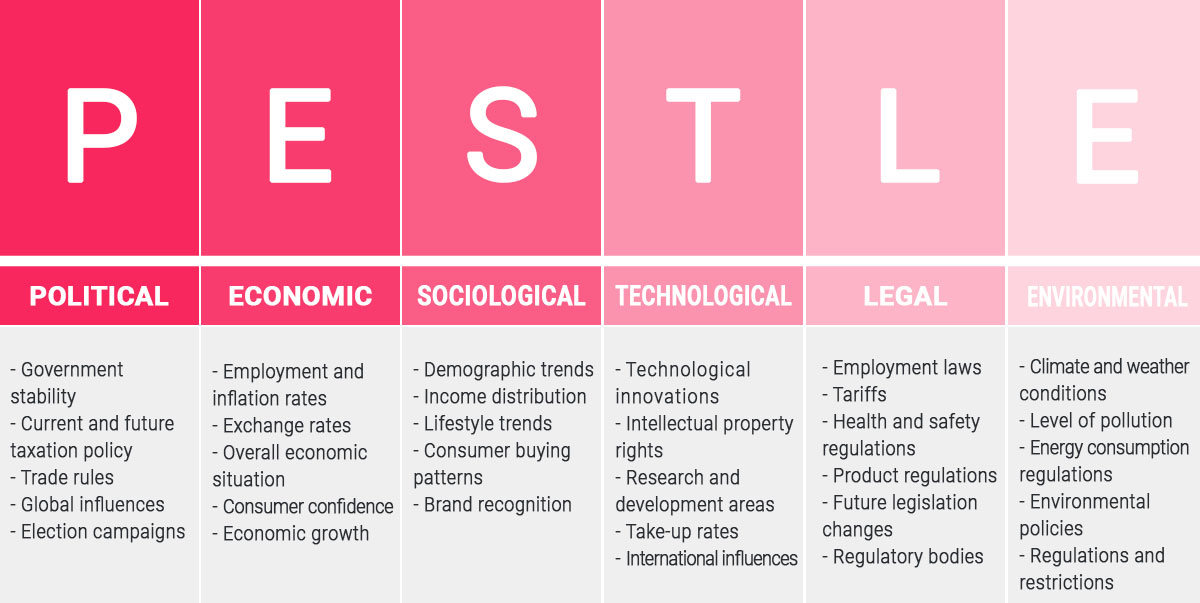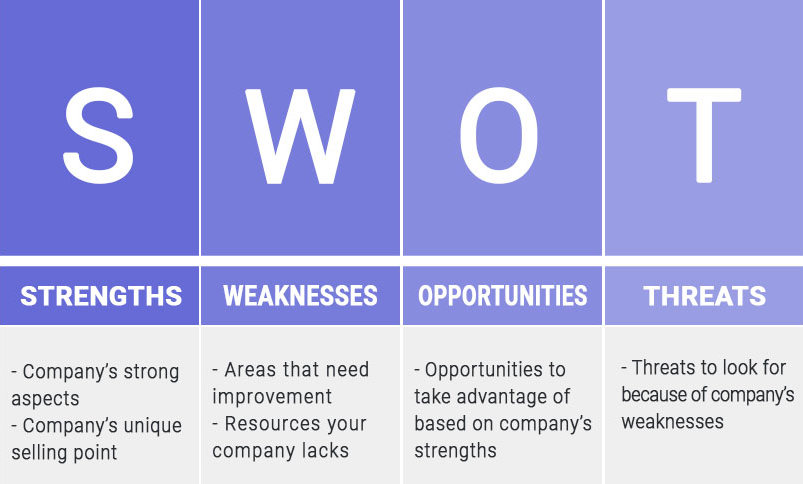Summary
This article breaks down what “business environment” really means — from internal factors like team structure and company values to external forces such as suppliers, customers, legislation, and economic conditions. Using frameworks like SWOT analysis and PESTLE analysis, it explains how to systematically evaluate these influences and build strategies that leverage opportunities and mitigate risks.
Diverse variety of factors may influence a business and lead it to success or downfall. The factors include the changes in the market your company is in, the weather in your team, the resources you have for the products you create and other business operations. Basically, anything can change the game you are playing, whether you took another path or are staying on solid ground without the need to reorganize the process. That is why it is essential to understand which actions determine the path you’ve chosen. In this situation, turning to business environmental analysis may be what you need. Therefore, in today’s article, we want to talk more about this strategy, cover the types of business environment that you should know about, and talk about the PESTLE and SWOT models.
Business Environment and Its Types
Being able to scan the surroundings and know how to adjust to them is vital. Whether you provide custom software development services, produce products in the manufacturing industry, or are planning to form a startup. But before going into details about the environmental analysis in business, let’s first determine what the business environment is and how it can be controlled.
To put it simply, it is an ecosystem that contains all activities related to your organization, resources, people, logistics, economic changes, and other internal and external factors. Everything affects, directly or indirectly, the way you run your business and improves or changes its overall performance and planning. All in all, there are three main business environment types that contain subcategories that are different for each company. Let’s take a closer look at these three types.
Internal Environment
All the processes, policies, employees, organizational and functional tools, resources, organizational structure – every factor within an organization is part of the internal environment. Considering that they can be changed or altered any other way, they are known as controllable factors. While many different changes in the company may occur from time to time, some of the major factors that may affect the environment are the following:
- Ethical standards and values
The values of the business owner build and transform the way the entire organization is functioning.
- Business objectives
Both strategic decisions and operations of a company are affected by the set objectives.
- Human resources
This factor is dependent on the dedication of your employees, their experience and skillset, as well as positive behavior.
- Organization’s structure
The number and variety of the specialists you have defines not only how the organization will function but also affects the time spent on decision-making.
- Brand equity and company image
Expanding or entering a new market, releasing new products, and other similar processes may change the image of your brand.
There are even more factors that influence or are affected by the internal environment. However, it is important to mention that these factors can’t influence an external environment.
Micro (External) Environment
As for the external types of business environment, they are out of reach and cannot be controlled. The micro environment contains the elements that are closer to the business in contrast to the macro environment and have an immediate effect on it. Thus, the following elements can cause the appearance of changes in the external environment:
- Suppliers
Uninterrupted supplies play an essential role in keeping organization on the float and successfully maintaining inventory, which is why it’s important to keep an eye on this factor.
- Customers
There are almost no businesses that function without customers, except maybe trading, so it’s vital to understand the needs of your clients.
- General public
The opinions of people from different groups that are not your direct customers may greatly change the image of your company if you made a false step.
- Competitors
You may not be the only one producing in your industry, therefore, it’s better to be always ready for the changes your competitors are implementing.
Macro (External) Environment
If talking about the macro environment, it consists of the larger societal forces that are completely out of your control that include the following:
- Politics and Law
It is vital to not forget that your company operates under certain government’s policies, regulations, and laws that change with time.
- Economy
Both the global economy and economy of your country can cause the increase or decrease of unemployment rate, inflation and other critical factors that may affect your business.
- Demography and society
Age, gender, occupation, and other details of the target group are relevant, because they have an impact on the goods and services you offer.
- Natural environment
You can’t deal with ecological or geographical factors, such as climatic conditions, location, possibility of natural catastrophes, etc. However, you are able to find methods to estimate risks that can come along.
Business Environment Analysis Process and Its Purpose
As you can see, there are a lot of factors that may have an effect on your business and the way you operate it. To be able to identify potential influence from any of the factors and understand whether it will provide you with an opportunity or may bring you disaster, you need to use analysis that covers the details about various business environments.
This strategic approach helps you to find strong and weak points of your business as well as internal and external threats or benefits that can change your further actions. As a result, you will be able to form effective strategies, improve decision-making, enhance overall organizational performance, and achieve objectives successfully. To know how to do all that, let’s look at which steps the process includes.
Step 1. Choose relevant factors
You need to identify the factors that should be evaluated. Talk to your Business Analyst in order to understand which of the elements to select and start finding the potential impact they can bring. It all depends on the industry you are in and your goals in general.
Step 2. Collect all important details
After you choose the environmental factors to evaluate, it is time to gather the information related to them. Look for the changes that happened recently in the industry, check for new reports on recent government changes that can impact your business. It is better to obtain as much info on everything related to your company as possible if you want to get successful analysis. Don’t forget to also monitor your competitors and evaluate their role in your business strategy.
Step 3. Predict the consequences
When you have compiled all the required details, you may proceed with forecasting, brainstorming, as well as surveying. The main task at this stage is to understand the impact and foresee possible scenarios. Thus, you will be able to find a way out if something unpleasant happens.
Step 4. Find solutions
At the final step, all that’s left is to develop strategies for each case or alter the ones you follow. This is the stage when you can assure yourself that you’ve done your best to overcome future challenges and mitigate risks.
Read Also How a Risk Management Plan Can Stop the Overflow of Different Business Risks
PESTLE and SWOT Analysis Models
Usually, there are two models that are used in business environmental analysis, which are known as PESTLE and SWOT.
When using the PESTLE analysis model, the main idea is to focus primarily on the external environments. Generally, it is considered to give a bigger picture, because you have a thorough understanding of particular factors, and helps to identify the key elements that may influence operations and decisions.

On the other hand, by following the SWOT model, it is possible to evaluate both external and internal impact depending on the strengths and weaknesses your business has.

Conclusions
When an organization faces plateauing, it becomes a recipe for downfall. That is why every company looks for ways to overcome challenges, improve management processes, make business operations better and objectives clearer. There is no single solution that will be ideal for every possible situation, so it always depends on your particular case. However, business environmental analysis is a popular option among different organizations and brings better understanding of the company’s strategies, which can be beneficial for you.
If you have an idea in your mind of improving processes of your business with the help of a custom software, web, or mobile solution, contact us, and our specialists will be ready to assist you in finding the best way.